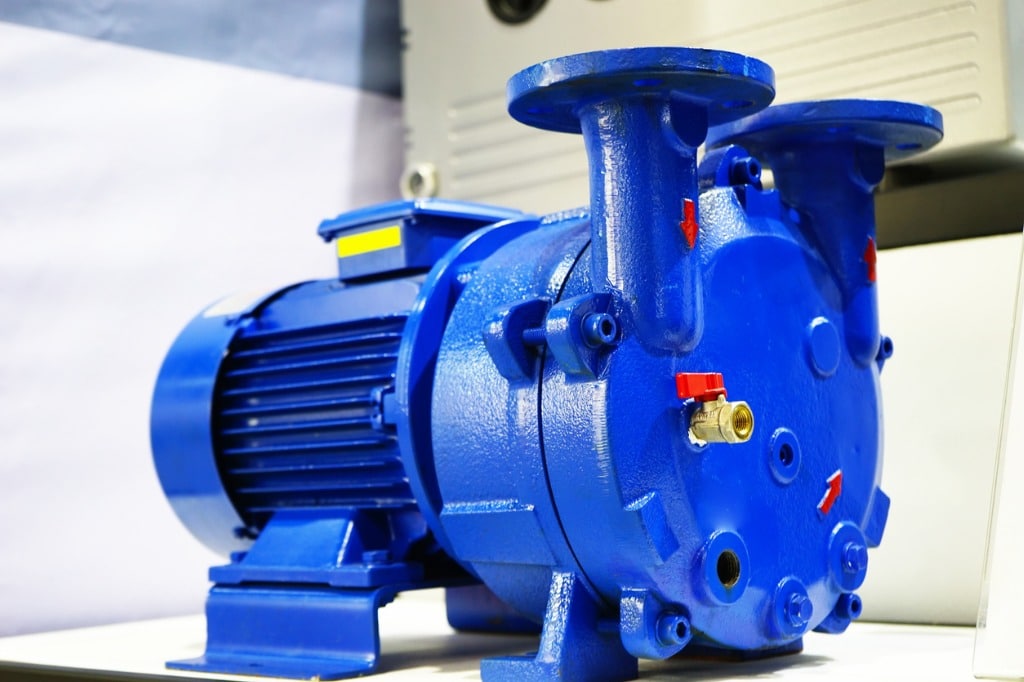Signs and Causes of Vacuum Pump Failure
 Vacuum pumps are industrial pumps that move liquids or gas molecules out of sealed containers to create a vacuum.
Vacuum pumps are industrial pumps that move liquids or gas molecules out of sealed containers to create a vacuum.
Today’s vacuum pumps can mechanically or chemically change the pressure in a space to move material from Point A to Point B. While efficient, vacuum pumps can fail if they aren’t properly maintained. Here are some of the most common causes of vacuum pump failure, warning signs that something might be wrong, and ways you can prevent these issues with your pump.
Common Causes of Vacuum Pump Failure
If your business’s vacuum pump fails, it will probably impact productivity and could even affect your bottom line. Some of the most common causes of vacuum pump failure include the following.
- Contamination caused by liquid or gas inside the pump
- Contamination due to faulty installation
- Mechanical failure due to wear and tear of parts
- Internal corrosion caused by worn or loose seals
- Worn out transmission parts, including displaced bearing position
- Cracked or fractured shell due to overload or internal stress
Signs of Vacuum Pump Failure
Knowing the potential causes of vacuum pump failure may not be enough to avoid trouble. When you are working around this type of pump daily, you will get to know its normal sounds and vibrations. When something seems “off,” that’s when it’s time to take a closer look for potential issues.
You don’t want to be caught off guard with a vacuum pump that can’t do the work you need for your business. Here are some common signs of vacuum pump failure.
1. Excessive Noise
When your vacuum pump starts making atypical or loud noises, this is a sign that failure could be on the horizon. As a pump’s parts wear or simply break, excessive noise can be a sign that the pump requires attention.
It might only need maintenance and cleaning. Some parts, like seals and diaphragms, are simple to replace, but more extensive repairs may be required if there are problems with the bearings or motor.
2. Longer Processing Times
If any contaminants, like dirt or dust, enter the vacuum pump valves or chamber, it will probably impact the performance of your pump. If you notice your pump requires more time to process the same materials, this might be the issue.
If there are contaminants in your pump and you fail to clear them out, the problem will only get worse. That debris can work its way into other parts of your pump and begin destroying vital components.
3. Overheating
When your vacuum pump starts overheating regularly, this is a sign that it could be failing. Things that can cause an overheated pump include poor ventilation, a bad motor, and using the pump for the wrong types of applications. The first step in troubleshooting these issues is to clear out any clogged ventilation areas and then assess other systems.
4. Pump Won’t Start
This might be a simple power issue if your vacuum pump won’t even turn on. Check to see if the pump’s fuse has been blown. If so, you can simply replace the fuse and monitor operation to determine any other troubles that might cause an overload. Sometimes, a pump might be pulling voltage that is too high for the motor. Without a fuse, this can cause severe damage.
5. Standstills or Slow Starts
Flow restrictions or blockages at the pump’s inlet or outlet can lead to standstills or slow starts. If you are experiencing these issues and don’t see any blockages, the pump might have a weak capacitor or motor.
How to Prevent Vacuum Prevent Failure
Committing to a regular service and maintenance schedule is the best way to prevent any type of vacuum pump failure. Even with regular maintenance, you’ll want to continue to watch out for the signs of failure outlined above.
Vacuum pumps should be dismantled and inspected after about every 3,000 hours of operation. For wet pumps, the oil needs to be thoroughly drained, checked, and changed. If the drained oil is dirty, you may wish to repeat this process until it runs clear. Every time the oil is changed, the folders need to be changed as well.
Drive belts should be examined to ensure they are free of oil and any cracks. If they are worn or oily from leakage, the belts should be replaced. If belts can be moved too much, they should be tightened.
The main shaft bearings should also be inspected to ensure proper alignment. If there is gradual or excessive wear, parts may need to be replaced.
Installing Vacuum Pumps Correctly
Installing a vacuum pump isn’t a difficult job, but it must be done correctly if you want your pump to provide optimum output and avoid failure. For example, it’s vital that the pump you choose is suitable for your intended application. It should also be able to rotate the way you want—some pumps can reverse direction, while others can’t.
Vacuum pumps should be inspected and cleaned prior to installation. Any contamination can impact their performance. Finally, a new vacuum pump requires thorough testing before being placed into service.
Contact C&B Equipment for More Information
If you want to avoid vacuum pump failure or need assistance with any type of industrial pump, C&B Equipment can help. We are an industrial equipment distribution and supply service company for pumps, air compressors, blowers, and related equipment. We offer a variety of industrial pumps as well as maintenance and support services designed to help you get the most value out of your equipment.
We have decades of experience installing and servicing industrial pumps and work with clients across a variety of industries. Our team of professionals serves clients throughout Oklahoma, Arkansas, Kansas, Missouri, and the Texas Panhandle. Contact us today for more information.
